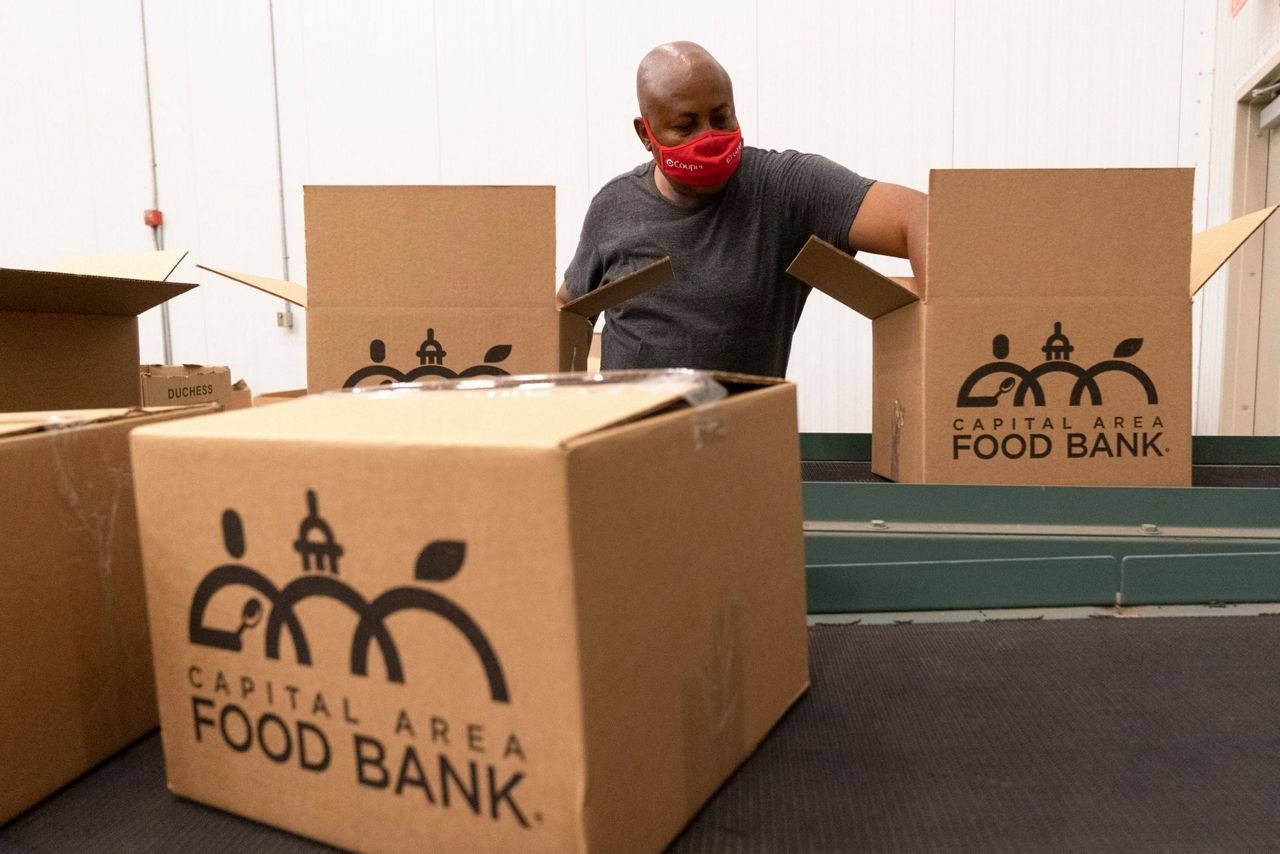For months, Catholic Charities of Southeast Texas has had to waitlist families hoping to join a food pantry program, as the nonprofit and other charities have struggled to meet soaring demand amid rising food prices and the end of federal pandemic relief aid.
The families who frequent the food bank, which is stocked like a grocery store with a wide range of nutritious food, are often already struggling to pay for housing, health care, and other expenses. So when they’re turned away from the pantry, they often seek out cheaper food or other food banks with fewer healthy options.
“If somebody is hungry and there isn’t anything else to eat but a honey bun, a honey bun is going to hit the spot,” says Carol Fernandez, president of Catholic Charities of Southeast Texas.
As the country’s food charities struggle to keep up with rising inflation and demand, the White House will host a conference on Wednesday. For several months, the Biden administration has hosted listening sessions with hunger and nutrition groups, corporations, and federal agencies to help find ways to end hunger by 2030. It’s an ambitious goal that would transform operations for nonprofits like Catholic Charities and the foundations that help feed the one in six Americans seeking food from nonprofits every year.
While few details have been released on the conference’s specific policy priorities, and questions abound over the political likelihood of big changes, nonprofits and foundations have found reasons for optimism. They hope the conference will be a launching point for sweeping change.
Food banks, which millions of Americans rely on when federal assistance is not enough, are not a long-term fix to the nation’s hunger problem, nonprofit leaders say. Instead, new approaches are needed that take into account how food is made available to those in need and how other factors, like high rents and low wages, affect hunger.
“The truth is that we throw away more food in the United States than is necessary to end hunger,” says Vince Hall, chief government relations officer at Feeding America. “This is not a question of lacking resources — it’s a question of lacking resolve.”
The last time the White House held a conference on hunger and nutrition was more than 50 years ago. The 1969 conference, called for by President Richard Nixon, promised to “put an end to hunger in America for all time” and led to several landmark policy changes, including school lunches and the Special Supplemental Nutrition Program for Women, Infants, and Children.
Such federal programs typically provide low-income Americans with direct assistance for purchasing food.
But foundations and nonprofits say that because hunger is related to other social and environmental challenges, including low wages and poverty, climate change, and racial and gender inequities, they have been focusing on addressing those issues.
Yet the federal government has not embraced that approach, hunger experts say.
“Food insecurity at its heart is caused by inadequate income,” says Lisa Davis, senior vice president of Share Our Strength’s No Kid Hungry campaign. “And we know that when families have incomes that don’t cover all their basic expenses, food is often the first thing they cut.”
The White House has released some general themes for the conference. They include improving food access and affordability, recognizing the role of nutrition in overall health, encouraging healthy choices and physical activity, and expanding food and nutrition research.
In the lead up to the conference, the White House held a series of six private listening sessions with a broad range of nonprofits and representatives from federal agencies, corporations, and academia. The administration has not yet announced who will attend the conference, which has fueled criticism from activists that the event will be little more than a glorified news conference.
Still, for Davis at Share Our Strength, the conference is a first step for opening broader conversations among nonprofits, foundations, government, and businesses about hunger and poverty.
“We can’t wait for the perfect political moment — we need to take action,” says Davis, who remains optimistic despite the challenges of passing major legislation in today’s heated political climate.
“We have to start somewhere, and right now is as good a time as any,” she says. “Indeed, the need is pretty urgent.”
At the height of the COVID-19 pandemic in 2020 and 2021, Congress expanded the child tax credit for low-income families, increased food-stamp payments, and made school meals free. Those temporary measures ultimately cut the U.S. child poverty rate in half in 2021, and food insecurity for families with children dropped to its lowest rate in two decades.
The success and impermanence of such measures — the expanded child tax credits expired at the end of 2021 — are top of mind for those considering what more permanent relief for families experiencing poverty and hunger might look like.
“Coming out of the pandemic, we’ve seen the creative responses that organizations, states, and the federal government made to meet this incredible challenge,” says Jane Stenson, vice president for food and nutrition and poverty reduction strategies at Catholic Charities. “A lot of that creativity is fresh, and we’re hoping that maybe it will weave itself into the final outcomes of the conference.”
On Friday, Feeding America, the nation’s largest network of food banks, released a report based on the responses of nearly 36,000 people facing hunger. More than three in four respondents said the government should bring back the child tax credit to help alleviate family poverty, and half of English-language respondents cited housing costs as a major driver of hunger and poverty.
“You can’t be food secure and healthy if you’re living in inadequate housing,” says Stenson. “It’s all interconnected.”
In addition to seeking a return of the expanded child tax credit, organizations like Feeding America have advocated for broader expansions of food stamps, school meals, and policies to address high housing costs for families that live in poverty.
“Food banks are extraordinarily important to the ultimate solution,” says Feeding America’s Hall. “But we should be functioning as an emergency measure, as a temporary source of assistance for people who are getting back on their feet.”
Eileen Hyde, senior director of community resiliency at Walmart, pointed to her company’s investments in food access and nutrition programs, and its efforts this month to make it easier to shop for SNAP-eligible items online, as positive ways that businesses can work to end hunger.
The company has plans to roll out a similar online experience for consumers paying for products with the Special Supplemental Nutrition Program for Women, Infants, and Children.
“That’s an example of us adapting and evolving our business strategies to intersect with key programs that serve our customers and improve their outcomes,” says Hyde of the new feature, which allows shoppers to sort for SNAP-eligible items. “It also improves their experience with us from a business perspective.”
Despite the momentum around this year’s conference, it will be difficult to live up to its 1969 predecessor’s success, says Andy Fisher, an anti-hunger activist and author of the book Big Hunger.
“They’re hoping to recreate that watershed moment — but I think the question is whether the political moment is really ripe for that,” says Fisher.
____
This article was provided to the Associated Press by the Chronicle of Philanthropy. Sara Herschander is a reporter at the Chronicle. Email: sara.herschander@philanthropy.com. The AP and the Chronicle receive support from the Lilly Endowment for coverage of philanthropy and nonprofits. The AP and the Chronicle are solely responsible for all content. For all of AP’s philanthropy coverage, visit https://apnews.com/hub/philanthropy.
Copyright 2022 The Associated Press. All rights reserved. This material may not be published, broadcast, rewritten or redistributed without permission.




